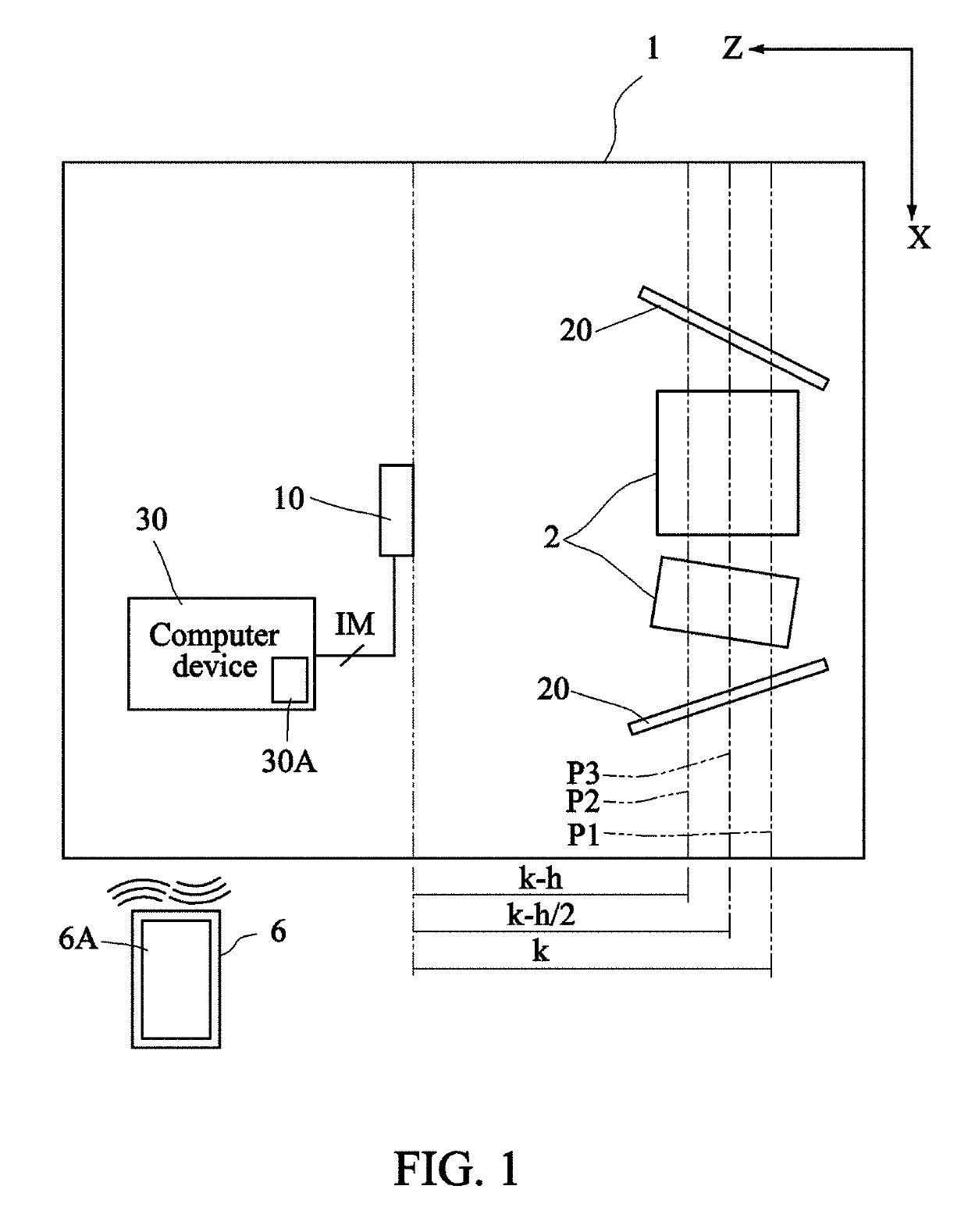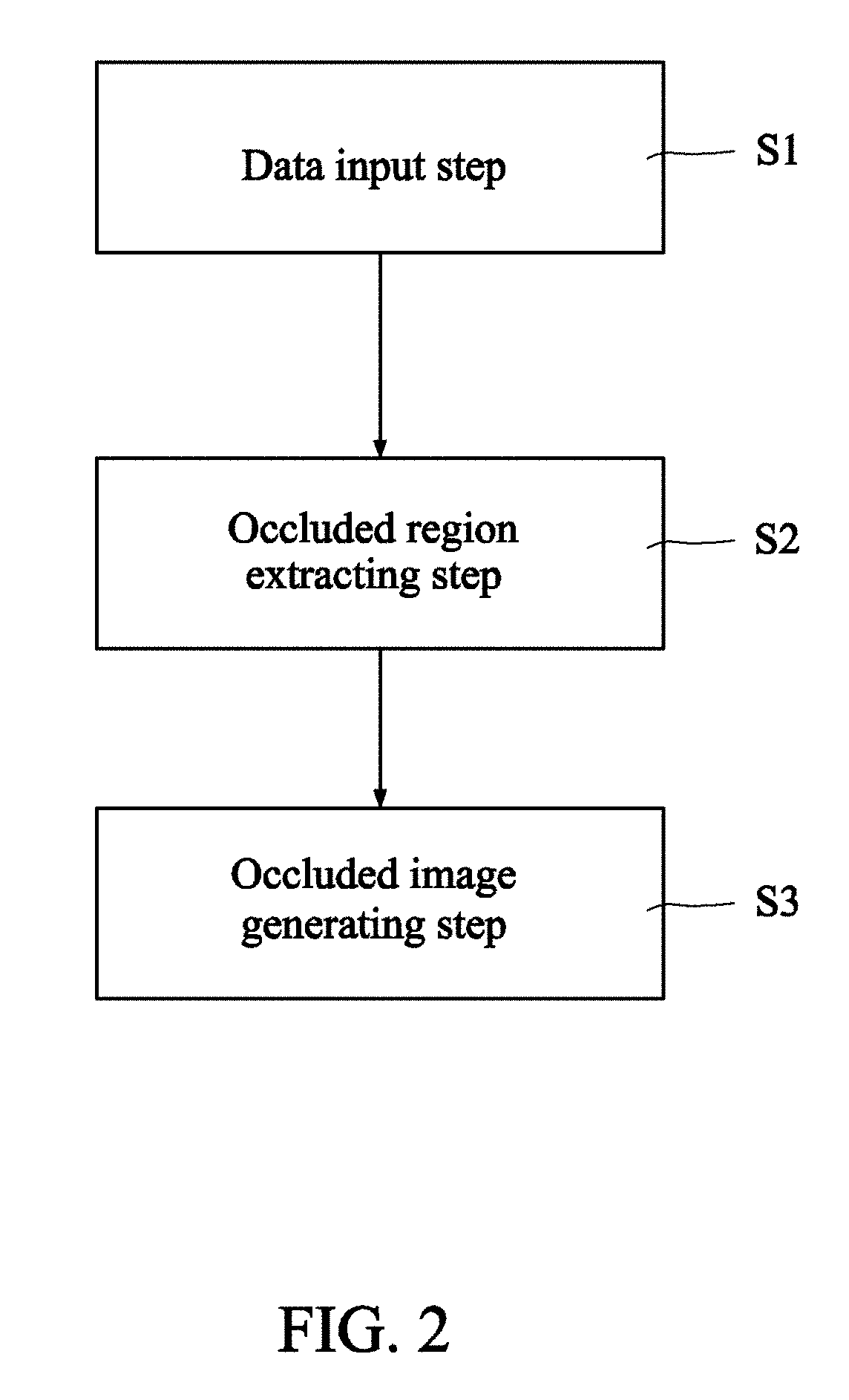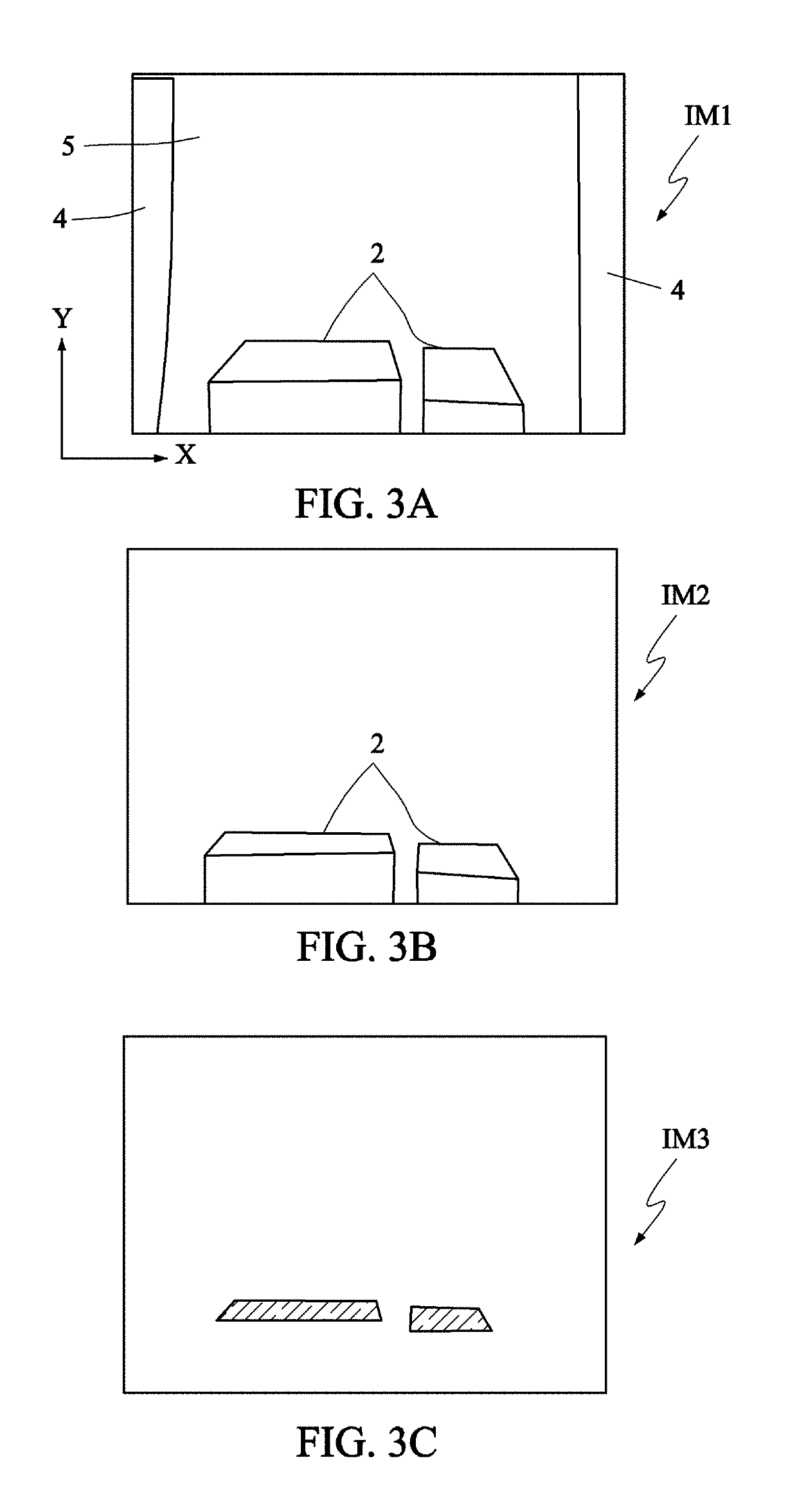Method for improving occluded edge quality in augmented reality based on depth camera
a depth camera and augmented reality technology, applied in the field of improving the quality of occluded edges in augmented reality systems, can solve problems such as deteriorating user experience, affecting the normal operation of sensing functions, virtual-real occlusion problems, etc., to improve the quality of occluded edges, improve occluded edges, and smooth the effect of occluded edges
- Summary
- Abstract
- Description
- Claims
- Application Information
AI Technical Summary
Benefits of technology
Problems solved by technology
Method used
Image
Examples
Embodiment Construction
[0020]The method of improving occluded edge quality according to the embodiment of the invention calculates the occluded edge intersection to in-paint occluded results in augmented reality based on 3D point information and computer vision in conjunction with geometric processing techniques.
[0021]FIG. 1 is a schematic top view showing an augmented reality system according to a preferred embodiment of the invention. FIG. 2 is a flow chart showing a method of improving occluded edge quality according to the preferred embodiment of the invention. Referring to FIGS. 1 and 2, the method of improving occluded edge quality of this embodiment is used in the augmented reality system. The method comprises a data input step S1, an occluded region extracting step S2 and an occluded image generating step S3, and may be executed using a computer host, a mobile phone or a computer device 30 of a server.
[0022]First, a range is defined or set for the extraction of the virtual-real occluded region in ...
PUM
 Login to View More
Login to View More Abstract
Description
Claims
Application Information
 Login to View More
Login to View More - R&D
- Intellectual Property
- Life Sciences
- Materials
- Tech Scout
- Unparalleled Data Quality
- Higher Quality Content
- 60% Fewer Hallucinations
Browse by: Latest US Patents, China's latest patents, Technical Efficacy Thesaurus, Application Domain, Technology Topic, Popular Technical Reports.
© 2025 PatSnap. All rights reserved.Legal|Privacy policy|Modern Slavery Act Transparency Statement|Sitemap|About US| Contact US: help@patsnap.com



